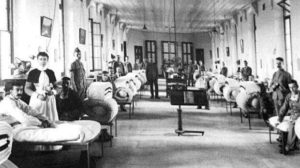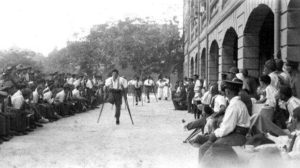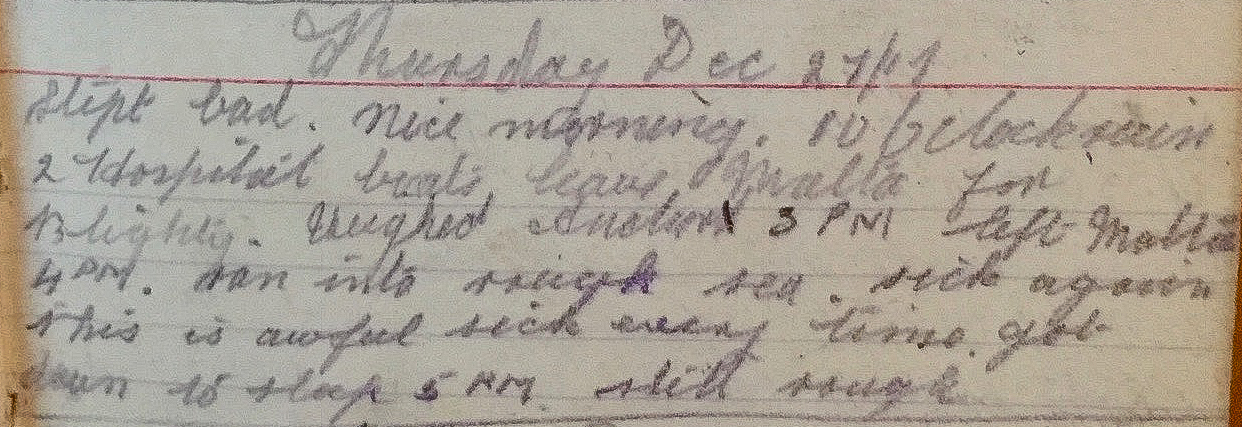Thursday, Dec 27th, 1917
Slept bad. Nice morning. 10 o’clock rain. Hospital boats leave Malta for Blighty. Weighed anchor 3pm, left Malta 4pm. Ran into rough sea. Sick again. This is awful – sick every time. Got down to sleep 5am – still rough.
Hospitals on Malta

Malta was an important medical centre for the care of wounded soldiers coming from first Gallipoli and then Salonika. Over the course of the war 136,000 Allied troops were treated and convalesced on the island. At its peak, there were 28 hospitals and facilities, with over 24,500 beds. By the end of the war Malta had earned itself the nickname, the ‘Nurse of the Mediterranean’.²
Hospital Ships

The Geneva Convention of 1864 and The Hague Convention of 1907 included provisions for the treatment of the wounded and the conduct of warfare at sea. Despite this, 25 hospital ships were sunk during WWI. Only four belonged to the Central Powers, the rest were sailing under the flags of Britain and her allies.
Of the total Allied losses, a third were sunk in just three months in Spring 1917 just after the German’s reintroduced ‘unrestricted submarine warfare’ in February 1917. The Guardian in late April that year reported Lord Lytton of the Admiralty talking of the seven hospital ships sunk by mine or torpedo. ‘In two cases the enemy deliberately torpedoed ships which they knew were hospital ships, published the fact to the world and gloried in it.’†
In addition to outrage, the authorities increasingly felt that the journey of hospital ships to and from Malta was too dangerous. Consequently, in support of the Salonika front, hospitals were set up in Greece. This lead to the gradual closure of the facilities on Malta. By August 1917, there were only around 6,000 patients left, many of whom were convalescing.¹ There are 7,300 war graves on Malta.
Blighty
Meaning Britain or ‘home’, Blighty was common slang used before and throughout the war. It originated in India. As Emily Brewer wrote – “The term is said to come from the Hindi for foreign, which was pronounced bilayati or vilayati. It was brought back by British troops who had been posted in India. As they were always referred to this way, they began to associate it with home and corrupted the term into an anglicized form.”º
References & further reading:
¹ ‘Why did Malta become one of WWI’s biggest hospitals?‘ by BBC
² ‘Military Hospitals, Malta, During the Great War 1914-18‘ at GreatWar
* ‘Cottonera Hospital and Malta as the ‘Nurse of the Mediterranean” from Malta Times (images may be subject to copyright)
† The Manchester Guardian, April 27th, 1917
º Emily Brewer ‘Tommy, Doughboy, Fritz – Soldier Slang of WW1’


